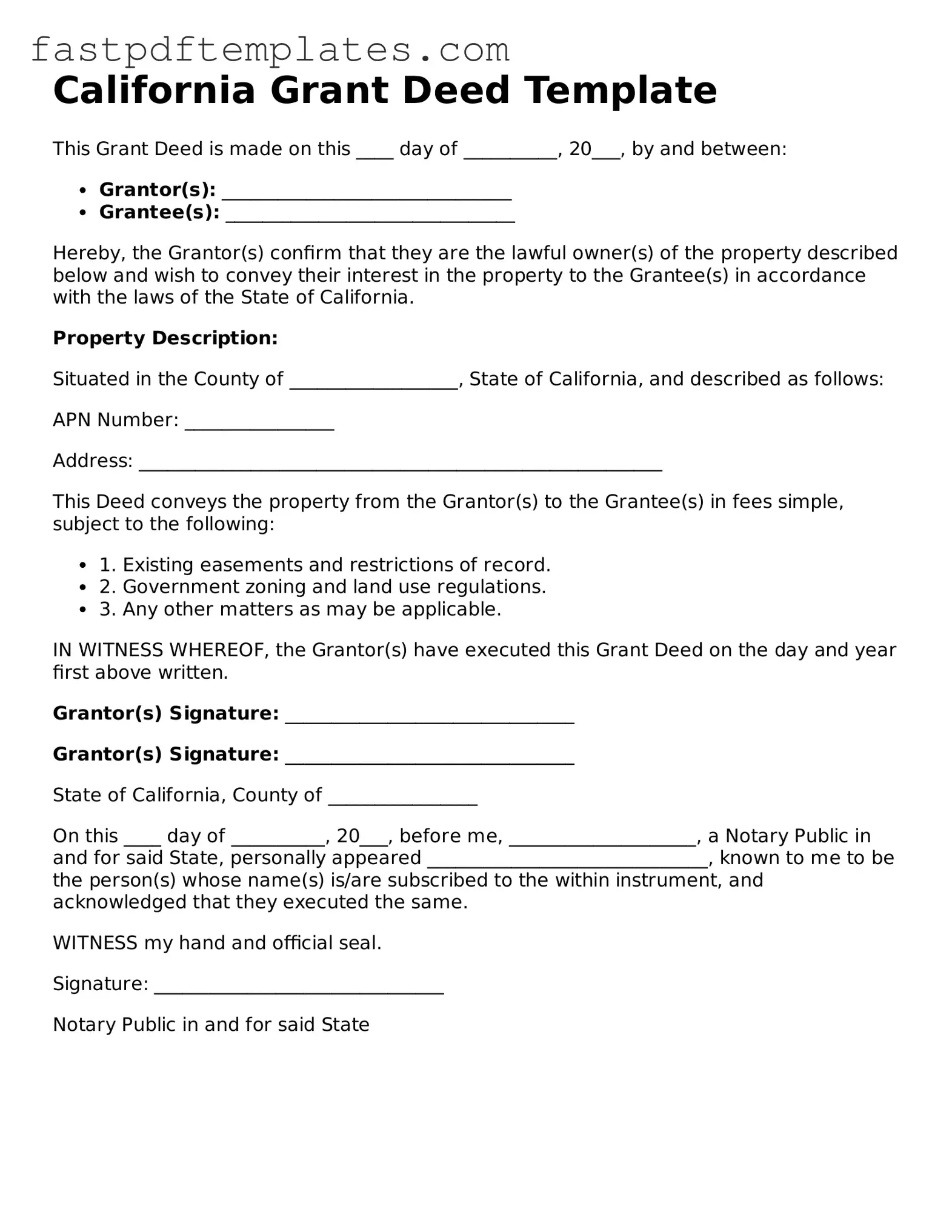California Grant Deed Template
This Grant Deed is made on this ____ day of __________, 20___, by and between:
- Grantor(s): _______________________________
- Grantee(s): _______________________________
Hereby, the Grantor(s) confirm that they are the lawful owner(s) of the property described below and wish to convey their interest in the property to the Grantee(s) in accordance with the laws of the State of California.
Property Description:
Situated in the County of __________________, State of California, and described as follows:
APN Number: ________________
Address: ________________________________________________________
This Deed conveys the property from the Grantor(s) to the Grantee(s) in fees simple, subject to the following:
- 1. Existing easements and restrictions of record.
- 2. Government zoning and land use regulations.
- 3. Any other matters as may be applicable.
IN WITNESS WHEREOF, the Grantor(s) have executed this Grant Deed on the day and year first above written.
Grantor(s) Signature: _______________________________
Grantor(s) Signature: _______________________________
State of California, County of ________________
On this ____ day of __________, 20___, before me, ____________________, a Notary Public in and for said State, personally appeared ______________________________, known to me to be the person(s) whose name(s) is/are subscribed to the within instrument, and acknowledged that they executed the same.
WITNESS my hand and official seal.
Signature: _______________________________
Notary Public in and for said State
